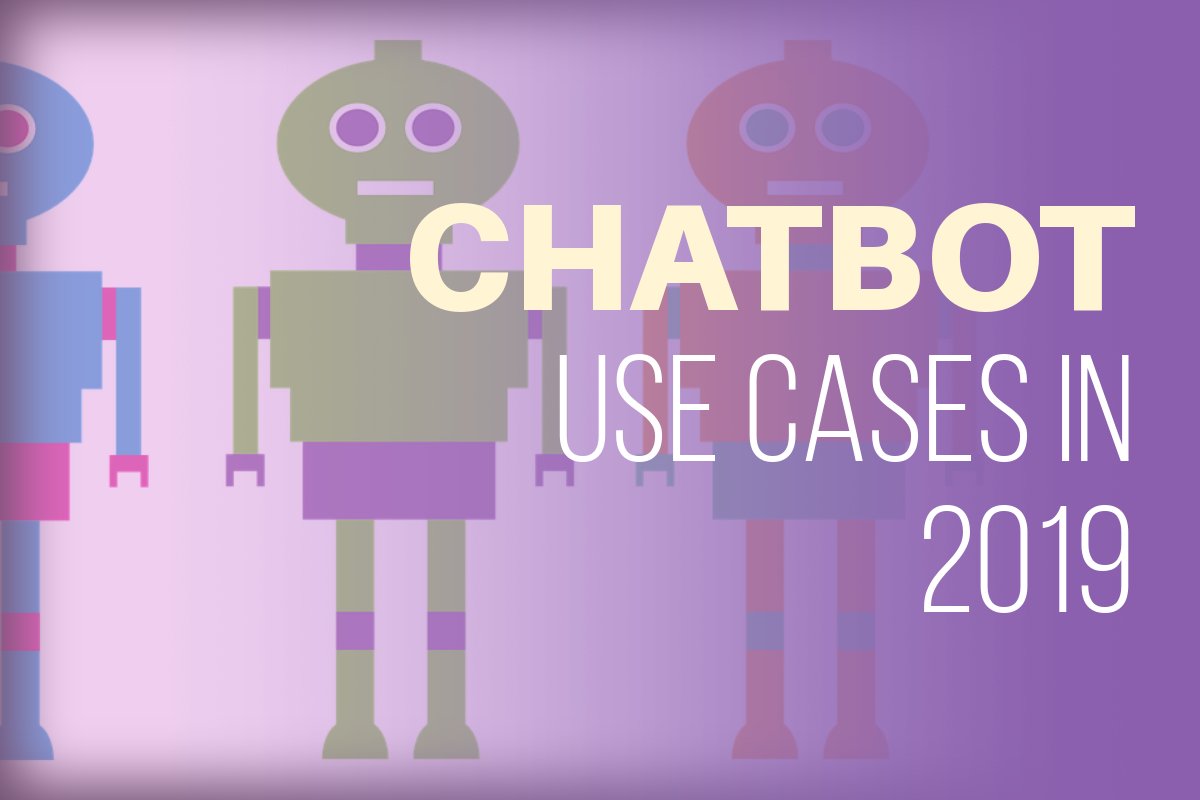After just a few short years, chatbots are moving out from the fertile feeding grounds of customer service to more business-focused uses. Check out where a bot will be helping your business in 2019 and beyond.
Human Resources
There’s been increasing growth in the use of chatbots for hiring, retention and staff management across the last couple of years, and it seems an area ripe for serious growth in 2019. Automation across the scope of HR activities helps the people in that office focus on their key value-adding tasks, and provides a way to cope with demand in fast-growing businesses or those with high turnover.
According to industry research, some 68% of HR professionals believe their current HR systems are unsuited for the modern workforce, and bots represent at worst a quick fix for hard-pressed offices, and at best a shining beacon of future IT-led way to recruit and retain staff. A growing number of recruitment chatbots offer vital assistance in winnowing down the number of applicants for the key interview stages, while internal bots for onboarding, holiday booking, absence management and other tasks will take over some of the mundane roles for HR.
Key task: Workers in large organisations can often feel like a cog in the machine. Having automated HR may boost that impression, so HR needs to use social skills, gamification and other efforts to maintain engagement and a feeling of belonging.
Help Desk
IT help desks are often undermanned and increasingly their own IT technology is coming to the rescue. Phones have been replaced by chat apps and now, chatbots are taking over the live chat to automate the process further. At least 50% of IT help requests are mundane, and bots can help deal with them, leaving the IT pros to deal with the more intensive cases.
Among the enterprise IT support tools offering bots out of the box include Freshchat, Zoho Desk and Zendesk Chat, while any business can craft its own custom chatbot to deal with, dealing with software, printer, OS and other common issues. Smarter bots can also learn to order consumables for the right office, while a bot can act as a key first responder to any major outage. As a side benefit, analytics can help predict patterns of problems, while leaving the engineers to manage to the business-critical assets.
Key task: The rogue user is present in any business, constantly doing things on their PC or IT equipment they shouldn’t be doing. Chatbots need to be able to identify out-of-usual-scope requests, or note regular troublesome users and report them directly for special attention.
Bot-to-Bot Communications
Crossing business boundaries, bots will soon be talking to each other as the rise of machine-to-machine communication grows. At its simplest, this could be a vending machine at a remote spot requesting resupply, requiring the Mark 1 human delivery agent to take up the slack. But, as trust and complexity improves, we could see shipping and freight bots talking to each other to find the fastest or most economical way to move goods around the world.
Bots already provide last-mile alerts in Facebook Messenger, but will soon be able to take into account inclement weather, changing political situations and trade tariffs or border restrictions to adjust their schedules and change routes. This will free up liner and shipping agents, and other roles to focus on the tasks that bots can’t easily handle, such as customers pushing for more environmentally friendly shipping options.
Key task: As the Maersk ransomware disaster proves, shipping must remain a highly secure environment, and bots must use the latest methods, be it blockchain or other security feature to protect traffic and goods.
Health
Medical and health service bots are increasingly common. In 2019 and beyond, however, these bots will start to develop a more emotional side to be able to better deal with the needs of worried, disturbed or stressed customers. Bots will also reach out wider, expect every workplace, college or university to have a mental wellness bot that anyone can talk to.
Alongside the rise in smarter bots that make the user feel at ease, virtual assistants will also become more aware of sensors like smartwatches, home monitors and so on. They can tell if someone is showing signs of illness and recommend courses of action, and in dire emergencies call the relevant service.
Key task: As digital health becomes a service that affects and benefits everyone, any failure of a bot will become a high profile issue. Companies need to be prepared to take remedial action fast, and ensure such failures are non-damaging to human health.
The Customer’s Friend
Every business has a range of customer-facing assets, and the chatbot has been in the vanguard of automating, speeding up and improving these interactions. In 2019 and beyond, bots will need to know the customer better, remember previous conversations, where appropriate, as part of the drive to “know the customer.”
Bots with links to sales data, social media and other areas can engage a customer. But, it has to be done in a “non-creepy” manner. As Hollywood struggles with the uncanny valley of digital characters on-screen, brands and sellers need bots that aren’t overly salesy or over-familiar, but put out an air calm positivity.
Key task: Many companies have launched and shuttered their bots, such as eBay’s ShopBot. Brands need a long-term plan and a sense of continuity to build on the progress of early bots. Simply canning them creates a disconnect with the customer and suggests that the bot was never really anyone’s friend.
Across all these areas, bots and their creators are on a mission to improve how businesses work. Even at this broad level, the impact is clear to see, and the need to improve and be better is also evident. Watch in 2019 to see which companies deliver on the promise, and who needs further work as bots and virtual assistants become ever-present, everywhere.
